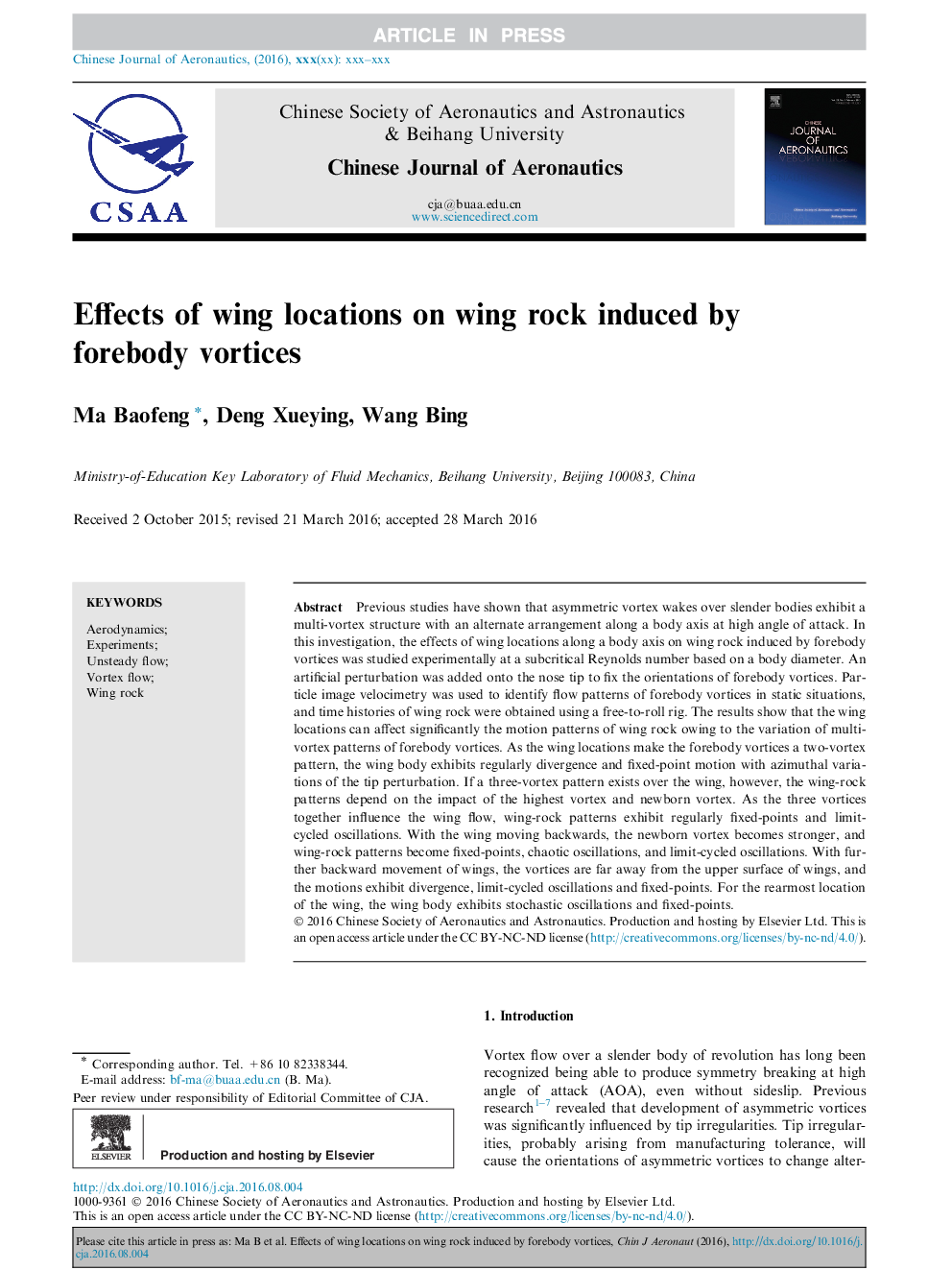| Article ID | Journal | Published Year | Pages | File Type |
|---|---|---|---|---|
| 7154321 | Chinese Journal of Aeronautics | 2016 | 11 Pages |
Abstract
Previous studies have shown that asymmetric vortex wakes over slender bodies exhibit a multi-vortex structure with an alternate arrangement along a body axis at high angle of attack. In this investigation, the effects of wing locations along a body axis on wing rock induced by forebody vortices was studied experimentally at a subcritical Reynolds number based on a body diameter. An artificial perturbation was added onto the nose tip to fix the orientations of forebody vortices. Particle image velocimetry was used to identify flow patterns of forebody vortices in static situations, and time histories of wing rock were obtained using a free-to-roll rig. The results show that the wing locations can affect significantly the motion patterns of wing rock owing to the variation of multi-vortex patterns of forebody vortices. As the wing locations make the forebody vortices a two-vortex pattern, the wing body exhibits regularly divergence and fixed-point motion with azimuthal variations of the tip perturbation. If a three-vortex pattern exists over the wing, however, the wing-rock patterns depend on the impact of the highest vortex and newborn vortex. As the three vortices together influence the wing flow, wing-rock patterns exhibit regularly fixed-points and limit-cycled oscillations. With the wing moving backwards, the newborn vortex becomes stronger, and wing-rock patterns become fixed-points, chaotic oscillations, and limit-cycled oscillations. With further backward movement of wings, the vortices are far away from the upper surface of wings, and the motions exhibit divergence, limit-cycled oscillations and fixed-points. For the rearmost location of the wing, the wing body exhibits stochastic oscillations and fixed-points.
Related Topics
Physical Sciences and Engineering
Engineering
Aerospace Engineering
Authors
Ma Baofeng, Deng Xueying, Wang Bing,
